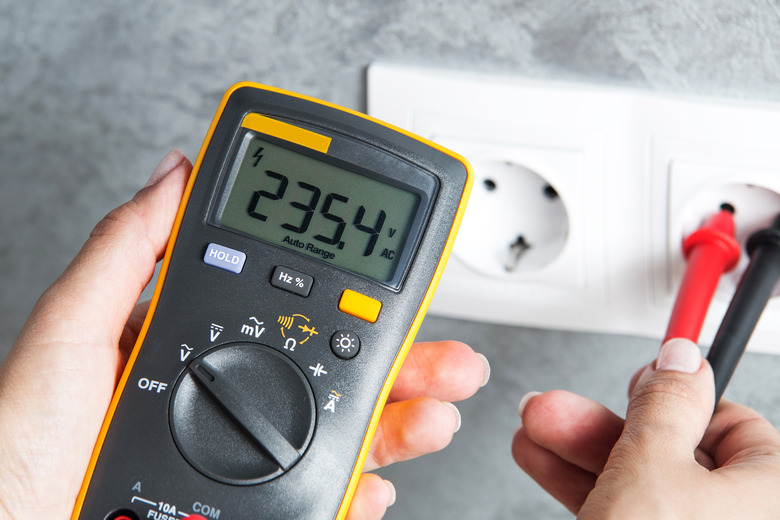What Does It Mean To Have An Open Hot Wire?
We may receive a commission on purchases made from links.
One of the basics that anyone dabbling in residential electrical work needs to know is the functions of the three wires that power every device connected to the circuitry. The two that supply electricity are the hot wire, which is black, and the neutral wire, which is white. The third wire, which is bare, grounds the circuit and directs stray electricity to earth, where it can dissipate without starting a fire.
The hot wire is the live circuit wire that is more or less directly connected to the power station via the main electrical panel, which is in turn connected to a transformer outside on the power lines. The neutral wire provides a return path back to the transformer and isn't energized unless it's connected to the hot wire. If you have an open hot wire, it means the hot wire is either disconnected or broken somewhere along its path, and every device connected to the wire after the break will lose power.
Tip
When a circuit has an open hot, it means there is a break or disconnect in the wire that carries power. In residential circuitry, this is most often due to a loose connection in a receptacle or switch.
The Causes of an Open Hot
The Causes of an Open Hot
It's possible for a hot wire to be severed somewhere inside a wall, and that would definitely cause an open hot situation, but it isn't the most common cause, and if it is, you'll probably need an electrician to help you find it. Usually an open hot results from a bad connection at a receptacle, switch, or light fixture. The extent of the power outage it causes depends on how the circuit is wired, but one thing is certain: The disconnected device will lose power.
You could characterize an electrical outlet with a bad connection as an open hot outlet because it's where the break in the hot wire occurs. Since outlets are often daisy-chained together with other devices, that outlet could cause a blackout in other parts of the house. The same is true for an open hot switch and, less frequently, an open hot light fixture that is daisy-chained to one or more fixtures or devices in the circuit.
How to Diagnose an Open Hot Outlet
How to Diagnose an Open Hot Outlet
You plug a lamp into a receptacle, turn it on, and nothing happens. The outlet itself may be an open hot outlet, or it could be wired to some other device that precedes it in the circuit that has become disconnected. There's an easy way to tell if you have two inexpensive tools: an outlet tester and a noncontact voltage tester.
An outlet tester has a series of LEDs, and the combination that illuminates tells you the condition of the wiring to that outlet. If you plug in the tester and no lights illuminate, that tells you the outlet is dead, and there's an open hot in the circuit somewhere. To determine if the wiring at that outlet is the problem, you could remove the cover plate and check the wires, but it's easier to simply wave a noncontact voltage tester in front of the outlet. If the tester beeps, it means it has detected current in the hot wire at that outlet. That in turn tells you to turn off the circuit breaker and reconnect the hot wire to the outlet.
How to Find an Open Hot
How to Find an Open Hot
If the noncontact voltage tester doesn't beep, all you have to do is keep checking outlets and switches. Make sure they are dead by using the outlet tester or flipping the switch to verify that the lights don't come on. Then, use the voltage tester to determine whether the hot wire inside the electrical box for the device is dead. If you get a beep from the voltage tester, you need to rewire that device.
There are two other common causes for an open hot that you need to verify before you start checking devices, and they are a tripped circuit breaker and a tripped GFCI outlet. Check the breaker box and then go around the house and push the reset button on all the GFCI outlets. If you find one that won't reset, it could be the culprit, so use the voltage tester to check for power in the hot wire for that device. If the tester beeps, that GFCI outlet needs to be rewired.
